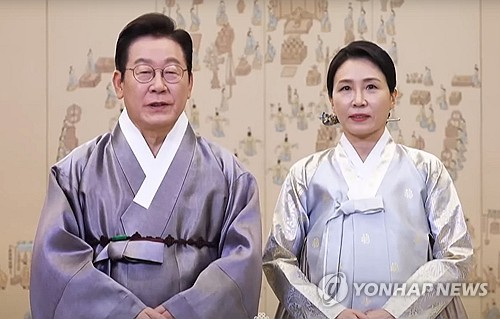Controversy has widened over President Lee Jae‑myung and his wife’s appearance on a JTBC variety show.
The timing, coming shortly after a fire at the government’s national data center, is the main point of dispute.
The Blue House (the presidential office) asked the broadcaster to postpone the episode, but the network aired it as scheduled. Political back-and-forth and legal complaints have since intensified, exposing strains in national unity and public trust in the media.
Variety TV and public office: timing and meaning
Core of the issue
Timing is everything.
The presidential office sought a delay out of respect for the mourning atmosphere, while the broadcaster decided to air the program.
Reaction came immediately across the political spectrum.
On the one hand, the conservative People Power Party criticized the appearance as inappropriate during a national crisis. On the other hand, the ruling Democratic Party framed the episode as cultural diplomacy and a form of outreach.
Both positions quickly escalated into lawsuits, counterclaims, and heated public debate.
Timeline
Reconstructing the sequence matters.
Immediately after the broadcast, social media showed sharply divided reactions and allegations that critical comments were being removed.
Meanwhile, questions about decision-making at the government, the broadcaster, and the political parties—plus transparency in media operations—became central points of contention.
In particular, the feelings of the families of the deceased public servant and responders at the scene became the emotional center of public discussion.

Arguments in favor
Supporters emphasize cultural diplomacy and outreach.
They can refresh a leader’s image and create rapport with citizens by showing a more familiar, everyday side of leadership.
Proponents also note measurable benefits.
For example, higher ratings and program buzz can draw attention to cultural exports and tourism, producing economic and reputational gains.
Therefore, reducing the episode to partisan attacks may miss those broader effects.
Advocates stress intent and content.
They point out that neither the president nor his spouse mocked the tragedy or spoke dismissively about public servants.
Thus, supporters argue the context and purpose of the appearance should be weighed before condemning the act itself.
Deeper pro analysis
Look at the communication strategy.
Consequently, occasional entertainment appearances can help policy messaging reach broader audiences.
Also, cultural promotion linked to national image should not be ignored.
There are historic examples where culinary and cultural exports boosted tourism and exports, reinforcing the argument that media appearances can yield tangible benefits.
Therefore, judging the whole episode only by immediate emotional reaction risks an incomplete assessment.
Arguments against
Critics focus on timing and propriety.
They argue that a president’s responsibility during a crisis is visible leadership: coordinating response, visiting affected sites, and leading public mourning.
Criticism also targets the initial response and communication from the presidential office.
Although a postponement was requested, the network aired the episode, and the perceived opacity of that exchange deepened public distrust.
Allegations that social media comments critical of the broadcast were later removed contributed to suspicions about manipulation and media reliability.
Deeper con analysis
An ethics and symbolism issue emerges.
Hence, even nonpolitical media events are judged against expectations for solemn, responsible leadership.
The episode also exposed institutional gaps.
Observers point to weaknesses in protocols for coordinating messages between government and media during emergencies, and to unclear role divisions in crisis communication.
Perceptions that the working conditions and sacrifices of civil servants were not adequately honored can harm morale across the public sector.
The media’s role
Broadcasting responsibility is under scrutiny.
Therefore, editorial choices, scheduling, and comment moderation demand transparent processes.
In this case, allegations of deleted comments became a focal point for distrust.
The balance between editorial independence and public responsibility calls for clearer norms and stronger self-regulation.
Without institutional checks, restoring audience trust will be difficult.
Political fallout
The dispute moved into legal channels.
At the same time, the controversy puts pressure on administrative crisis response and on political leaders to act responsibly.
Looking ahead, the episode could be replayed in future campaigns as a branding and messaging issue.
Parties may use it to rally supporters, which could lower the quality of public dialogue.

Social impact
Beware emotional fractures.
If culture-promotion arguments are overstated, the result can be social polarization.
So a balanced approach is necessary.
It requires mature division of roles among politics, media, the judiciary, and administration, plus mutual verification.
Strengthening protocols for disaster response remains an urgent policy task.
International perspective
Leadership behavior sends signals abroad.
Domestic controversies can be reframed differently by international audiences, which introduces additional reputational risk.
Policy recommendations
Clear rules are needed.
Specific measures might include procedures for adjusting broadcast schedules during emergencies and policies to ensure consistent official messages.
Improving media transparency and comment-management norms is also urgent.
Fair information flow and platform accountability are basic conditions for a healthy democracy.
These steps could help rebuild institutional trust.
Ethical reflection
Public responsibility must guide action.
Respect for working civil servants and for those who gave their lives is foundational to public trust.
The president’s style of communication directly affects trust and stability.
Therefore, critics urge prioritizing public duty over political calculation when timing and optics matter most.
Conclusion
Balance is essential.
Policy and institutional fixes, plus greater transparency in media operations, are urgent.
To summarize: first, set clear principles for public officials’ media appearances. Second, create protocols to coordinate government and media responses during disasters. Third, strengthen transparency in comment moderation and information distribution to restore media trust.
This controversy points to deeper questions of institutions, ethics, and trust beyond immediate emotions.
Finally, we ask the reader: how do you judge this case?